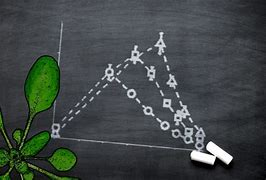"A simple shoot emerging from the soil can add, subtract, and integrate multiple dynamic signals over time.
Plants sum and subtract stimuli over different timescales (Mathieu Rivière and Yasmine Meroz, PNAS, 10 Oct 2023). A glance through this Darwin-free scientific paper shows differential equations, integrals and derivations.
The title of the paper mentions addition and subtraction, but the ability to integrate multiple input signals in a time-varying manner is the work of calculus. Here’s what the authors say about their measurements and experiments with wheat seed sprouts:
A humble little seedling without a brain can add, subtract, compare values over time, and navigate with active sensing?
Plants are sessile decentralized systems with no brain or neural system, and very little is known regarding how they quantify external stimuli. We experimentally probe the dependence of gravitropicresponses of wheat coleoptiles on the presence of previous stimuli, revealing how coleoptiles integrate multiple stimuli over time. We report quantitative evidence that plants effectively respond not only to sums of stimuli but also to differences between stimuli, over different timescales. This finding advances our understanding of how plants negotiate their environment since the ability of organisms to subtract stimuli over time is crucial in order to compare signals and is at the basis of navigation and active sensing.
A humble little seedling without a brain can add, subtract, compare values over time, and navigate with active sensing?
Q: Who taught it to do such things?" CEH
A: And the earth brought forth grass, and herb yielding seed after his kind, and the tree yielding fruit, whose seed was in itself, after his kind: and God saw that it was good. Genesis 1:12
A: And the earth brought forth grass, and herb yielding seed after his kind, and the tree yielding fruit, whose seed was in itself, after his kind: and God saw that it was good. Genesis 1:12


